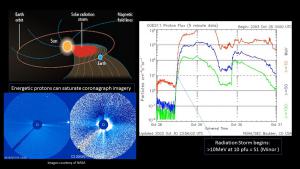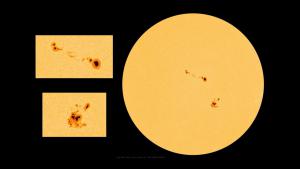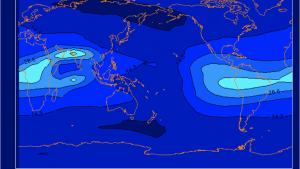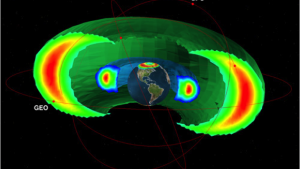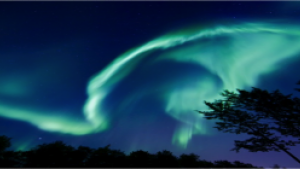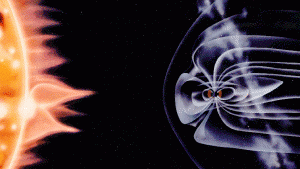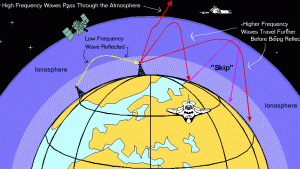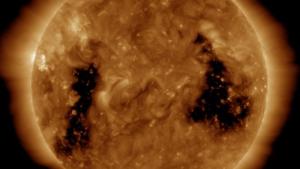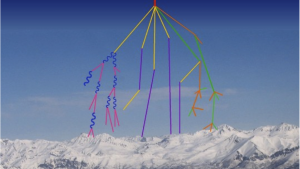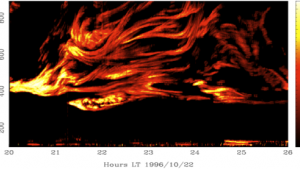NOAA Scales mini
Navigation: Low-frequency navigation signals degraded for brief intervals.
near_earth
Sunspots are dark areas that become apparent at the Sun’s photosphere as a result of intense magnetic flux pushing up from further within the solar
The Total Electron Content (TEC) is the total number of electrons present along a path between a radio transmitter and receiver.
Radiation belts are regions of enhanced populations of energetic electrons and protons surrounding the Earth in space.
The Aurora Borealis (Northern Lights) and Aurora Australis (Southern Lights) are the result of electrons colliding with the upper reaches of Earth’
The magnetosphere is the region of space surrounding Earth where the dominant magnetic field is the magnetic field of Earth, rather than the magnet
The Ionosphere, between 80 and ~600 km in the Earth’s upper atmosphere, is where solar radiation caused ionization creates a layer of electrons that can effect earth systems.
Coronal holes appear as dark areas in the solar corona in extreme ultraviolet (EUV) and soft x-ray solar images.
Galactic Cosmic Rays (GCR) are the slowly varying, highly energetic background source of energetic particles that constantly bombard Earth.
Ionospheric scintillation is the rapid modification of radio waves caused by small scale structures in the ionosphere.
